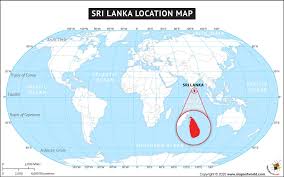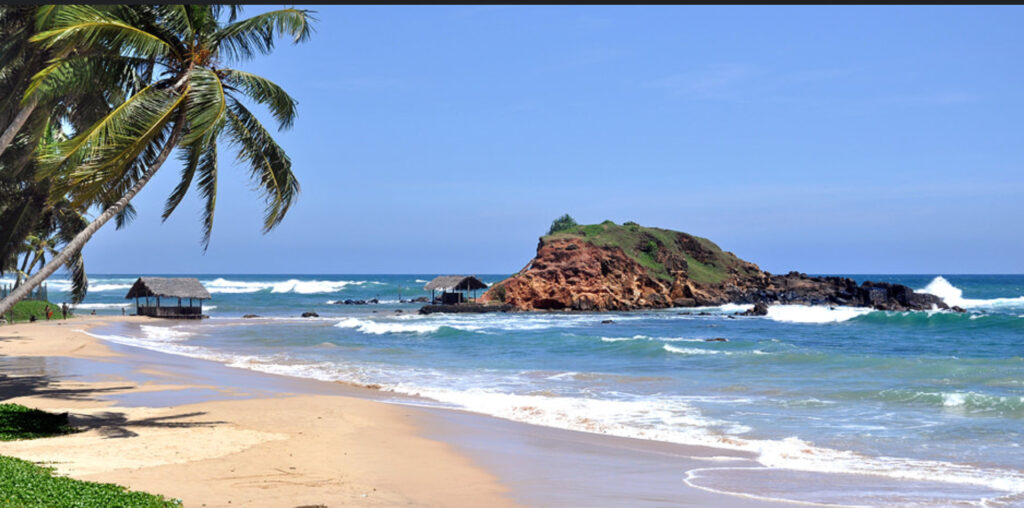All About Sri Lanka, Jewel in the Indian Ocean
Sri Lanka, an island nation located in the Indian Ocean, lies just off the southeastern coast of India. Known for its stunning landscapes and rich biodiversity, Sri Lanka is strategically positioned between the latitudes of approximately 5° and 10° North and longitudes of 79° and 82° East. This prime location has made the country a hub for maritime trade and cultural exchange for centuries.
Size and Topography
Covering an area of approximately 65,610 square kilometers, Sri Lanka is the 25th largest island in the world. The country boasts a diverse topography, ranging from coastal plains and tropical beaches to lush rainforests and the central highlands dominated by mountains and plateaus. The highest point is Pidurutalagala, which rises to an elevation of 2,524 meters (8,281 feet) above sea level.
The diverse geography of Sri Lanka not only shapes its natural beauty but also influences its climate, culture, and economy. From the pristine beaches to the misty highlands, the island’s varied landscapes offer a unique experience for travelers and locals alike.

Covering an area of approximately 65,610 square kilometers, Sri Lanka is the 25th largest island in the world. The country boasts a diverse topography, ranging from coastal plains and tropical beaches to lush rainforests and the central highlands dominated by mountains and plateaus. The highest point is Pidurutalagala, which rises to an elevation of 2,524 meters (8,281 feet) above sea level.
Geographic Features of Sri Lanka

Location
The Coastal Belt: Characterized by sandy beaches and lagoons, the coastal belt is popular for tourism and fishing activities.
The Central Highlands: Known for tea plantations and scenic hill stations like Nuwara Eliya, this region experiences cooler temperatures and is vital for the country’s agricultural economy.
The Dry Zone: Predominantly located in the north and east, this area is marked by arid landscapes and ancient irrigation systems that support rice cultivation.
The Wet Zone: Found in the southwest, this region receives heavy rainfall and is home to dense rainforests and biodiversity hotspots such as Sinharaja Forest Reserve.
Islands and Water Bodies in the Indian Ocean
In addition to the main island, Sri Lanka encompasses several smaller islands, including the Jaffna Peninsula and Pigeon Island. The country is also surrounded by the Indian Ocean and is bordered by the Bay of Bengal to the northeast and the Arabian Sea to the northwest. Major rivers such as the Mahaweli, Kelani, and Kalu provide vital water resources for agriculture and hydroelectric power.
The diverse geography of Sri Lanka not only shapes its natural beauty but also influences its climate, culture, and economy. From the pristine beaches to the misty highlands, the island’s varied landscapes offer a unique experience for travelers and locals alike.
The History of Sri Lanka
A Tapestry of Cultures and Civilizations
With over 2,500 years of documented history, Sri Lanka is a treasure trove for history enthusiasts and explorers alike.
Prehistoric Settlements: Evidence of human habitation dates back over 125,000 years, with the Balangoda Man as one of the earliest known species.
Anuradhapura Kingdom (377 BCE – 1017 CE): The introduction of Buddhism by Mahinda Thero during this period shaped Sri Lanka’s cultural and architectural heritage.
Polonnaruwa Period (1055 CE – 1232 CE): Renowned for advanced irrigation systems and grand monuments, this era highlights the island’s engineering prowess.
Colonial Era
Portuguese Rule (1505 – 1658): Marked by the establishment of coastal strongholds and the introduction of Christianity.
Dutch Occupation (1658 – 1796): Expanded trade networks and administrative reforms.
British Colonization (1796 – 1948): Development of tea plantations and modern infrastructure, leading to independence.
Independence and Modern Era
Independence in 1948: Sri Lanka, formerly Ceylon, embraced a parliamentary system of governance.
Post-Conflict Development: Focus on infrastructure, tourism, and national reconciliation.
Experience the Legacy
Explore ancient cities like Anuradhapura and Polonnaruwa, and immerse yourself in the colonial charm of Galle Fort.
Population and Religious Aspects of Sri Lanka
Discover the vibrant cultural diversity of Sri Lanka with a population of approximately 22 million, Sri Lanka is a melting pot of ethnicities and religions that shape its rich heritage.
Population Distribution
Urban vs. Rural: Around 18% reside in bustling cities like Colombo and Kandy, while the majority thrive in rural communities engaged in agriculture and crafts.
Ethnic Composition: Sinhalese (75%), Tamils (15%), and Moors (9%) form the core communities, with smaller groups like Burghers, Malays, and Indigenous Veddas adding to the cultural fabric.
Religious Diversity
Buddhism: Practiced by nearly 70%, predominantly among the Sinhalese. Iconic sites include the Temple of the Tooth in Kandy and the ancient city of Anuradhapura.
Hinduism: Followed by approximately 12%, mainly among Tamils in the Northern and Eastern provinces.
Islam: Representing around 9%, practiced largely by the Moor community.
Christianity: Roughly 7%, with Roman Catholics and Protestants as the main denominations.
Embracing Harmony
Despite historical challenges, Sri Lanka has made strides in fostering religious tolerance and celebrating festivals like Vesak (Buddhist), Thai Pongal (Hindu), Eid al-Fitr (Islamic), and Christmas (Christian).
Planning Your Journey
Monsoons and Temperatures in Sri Lanka: A Year-Round Paradise
The island’s unique geographical position near the equator gives it a tropical climate with distinct monsoon seasons and varying temperatures.
Monsoon Seasons
Southwest Monsoon (Yala Season): From May to September, it brings heavy rainfall to the southwestern coast and central highlands.
Northeast Monsoon (Maha Season): From October to January, affecting the northern and eastern regions with moderate to heavy rainfall.
Inter-Monsoon Periods: February to April and October to mid-November offer balanced weather with occasional showers, perfect for exploration.
Temperature Variations
Coastal Areas: Average temperatures range from 27°C to 32°C (80°F to 90°F).
Central Highlands: Cooler climates in areas like Nuwara Eliya, where temperatures can drop to 10°C (50°F).
Dry Zone: Regions like Anuradhapura and Polonnaruwa experience warmer and drier conditions, averaging around 30°C (86°F).
Best Time to Visit Sri Lanka.
December to March: Ideal for the southern and western coasts and the central highlands.
April to September: Perfect for exploring the eastern and northern coastal areas.







